Explore Shanghai - China Travel, Asia
Welcome to Shanghai, China’s dazzling metropolis where East meets West in a vibrant blend of tradition and modernity. As the country’s most developed city, Shanghai is a global hub of finance, culture, and innovation. With its sleek skyscrapers, historic landmarks, and bustling streets, it offers an unparalleled travel experience. Whether you're exploring its iconic landmarks, savoring its diverse cuisine, or immersing yourself in its rich cultural tapestry, Shanghai promises to captivate and inspire. Journey through the city's history, cultural influences, interactions with locals, and more, will help you make the most of your visit to this extraordinary destination.
Population: Approximately 24.9 million in 2023.
Economy: Global center of finance, trade and innovation, and house the world’s busiest container port.
Landmarks: Shanghai Tower, Jade Buddha Temple, and Yu Garden.
China
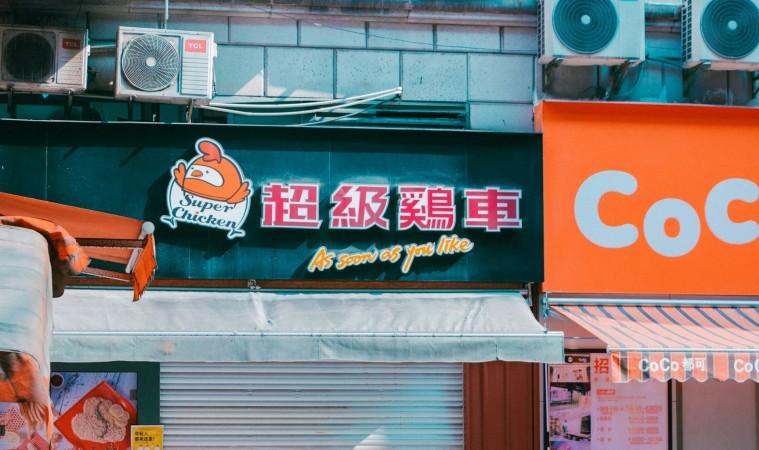
Overview of Shanghai
History & Culture Influence
Shanghai’s history is a fascinating journey from a small fishing village to a global financial powerhouse. Founded over a thousand years ago, the city began to flourish in the 19th century, particularly after the Treaty of Nanking opened it to international trade. This time marks the beginning of Shanghai's transition to a major international port. Shanghai is a melting pot of cultures with its unique position as a trading hub attracting influences from across the globe. The city’s modern skyline contrasts with traditional Chinese architecture, as this cultural fusion extends to its arts scene, where traditional Chinese opera and modern art exhibitions coexist. Shanghai’s cultural landscape is a testament to its rich history and dynamic growth.
Interaction with The Locals
Shanghai, China’s largest city, boasts a population of over 24.9 million people. This thriving metropolis is renowned for its dynamic fusion of traditional Chinese culture and modern urban life. Its diverse and rapidly growing population reflects its status as a global financial and cultural hub. Locals are generally friendly and proud of their city’s heritage. English is commonly spoken in tourist areas, but learning a few basic phrases in Mandarin can enhance your interactions during your trip to Shanghai.
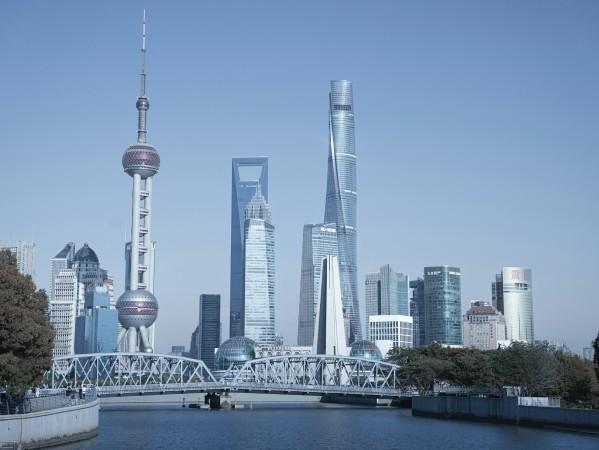
Modern skyscrapers in Shanghai - © Amamiya Ryoichi
Top Attractions in Shanghai
- The Bund: No trip to Shanghai is complete without a stroll along The Bund. This iconic waterfront area offers stunning views of the city’s skyline, where historical buildings from the early 20th century stand in contrast to the futuristic skyscrapers across the Huangpu River. The Bund is especially beautiful at night, when the buildings are brilliantly lit.
- Oriental Pearl Tower: For breathtaking panoramic views of Shanghai, head to the Oriental Pearl Tower. This striking landmark features a unique design and observation decks that provide a 360-degree view of the city. It’s also home to a museum and a rotating restaurant, making it a great spot for both sightseeing and dining.
- Shanghai Tower: Standing as China’s tallest building, the Shanghai Tower reaches an impressive height of 632 meters. Its sleek, spiral design is a marvel of modern architecture. The tower’s observation deck offers unparalleled views of Shanghai and beyond.
- Yu Garden: Step back in time with a visit to Yu Garden, a classic example of traditional Chinese garden design. Located in the Old City, this serene oasis features beautifully landscaped gardens, historic pavilions, and intricate rockeries. It's an ideal peaceful retreat destination from the city's rush and hustle.
- Nanjing Road: For shopping enthusiasts, Nanjing Road is a must-visit place in Shanghai. This bustling shopping street stretches over 5 kilometers and is lined with an array of shops, from high-end boutiques to local stores. It's an energetic neighborhood that captures the essence of Shanghai's shopping opportunities for any visitor traveling here.
- Jade Buddha Temple: A visit to the Jade Buddha Temple offers a glimpse into Shanghai’s spiritual side. This active Buddhist temple is renowned for its stunning jade Buddha statues and tranquil atmosphere. It’s a place of reflection and a great spot to learn about Buddhist traditions.
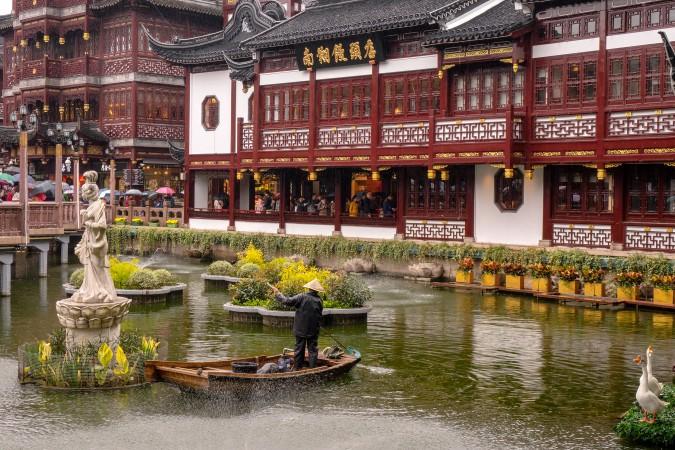
Yu Garden - © Wikimedia
Must-Try Dishes in Shanghai
- Xiaolongbao (Soup Dumplings): No visit to Shanghai is complete without trying Xiaolongbao, the city’s signature dish. These delicate dumplings are steamed to perfection and filled with a savory pork mixture and a flavorful broth. The key to enjoying Xiaolongbao is to pierce the dumpling gently with your chopsticks and sip the rich soup before savoring the tender pork filling.
- Shengjianbao (Pan-Fried Pork Buns): Another local favorite is Shengjianbao, or pan-fried pork buns. These buns have a crispy bottom and a soft, steamed top, offering a delightful contrast in textures. Filled with juicy pork and a hint of garlic and ginger, they’re best enjoyed fresh from the pan.
- Hairy Crab: Seasonal hairy crab is a real Shanghai delicacy, particularly in the fall. This crab, known for its sweet, luscious flesh and rich roe, is often cooked and served with a simple dipping sauce. It's a must-try for seafood lovers and a highlight of Shanghai’s culinary scene.
- Red Braised Pork: Red Braised Pork, or Hong Shao Rou, is a flavorful dish where pork belly is slowly braised in soy sauce, sugar, and various spices. The result is tender, caramelized meat with a rich, slightly sweet flavor. This dish embodies the essence of Shanghai’s home-style cooking.
- Scallion Oil Noodles: For a simpler yet equally satisfying dish, try Scallion Oil Noodles. This dish features chewy noodles tossed in a fragrant blend of scallion oil and soy sauce. It’s a popular choice for a quick meal and a great way to experience Shanghai’s love for simple, delicious food.
- Local Street Food: Shanghai’s street food scene is vibrant and diverse, offering everything from savory pancakes to sweet treats. Be sure to explore local markets and street stalls to sample dishes like jianbing (Chinese crepes) and tanghulu (candied fruit skewers).
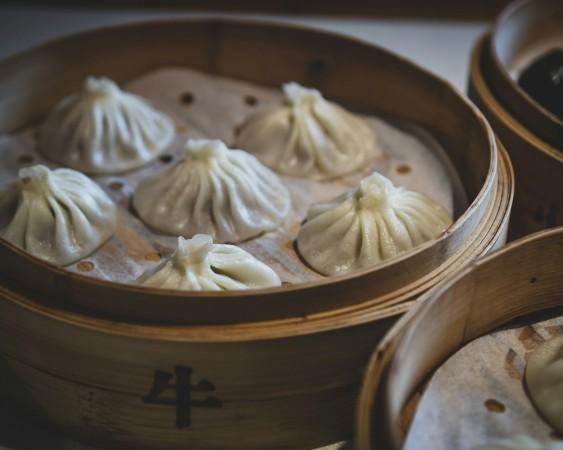
Xiaolongbao - © Bao Menglong
Festivals & Local Celebrations
Chinese New Year
Shanghai's most prominent event is the Chinese New Year, also known as the Spring Festival. The city comes alive with lively parades, traditional lion dances, and spectacular fireworks. It’s a time for family reunions, feasting, and honoring cultural traditions.
Shanghai International Film Festival
The Shanghai International Film Festival, held annually, attracts filmmakers and cinephiles from around the world. This prestigious event showcases a diverse array of films and provides a platform for cultural exchange and networking.
Dragon Boat Festival
Celebrated in June, the Dragon Boat Festival features thrilling dragon boat races, delicious zongzi (sticky rice dumplings), and various cultural activities. It’s a festive occasion that highlights Shanghai’s rich cultural heritage.
Lantern Festival
The Lantern Festival marks the end of Chinese New Year celebrations with colorful lantern displays, traditional performances, and family gatherings. In Shanghai, you can enjoy stunning lantern exhibits and participate in local festivities.
Shanghai Fashion Week
Shanghai Fashion Week is a major event in the global fashion calendar, showcasing the latest trends from both established and emerging designers. It’s an exciting time for fashion enthusiasts to witness cutting-edge designs and creativity.
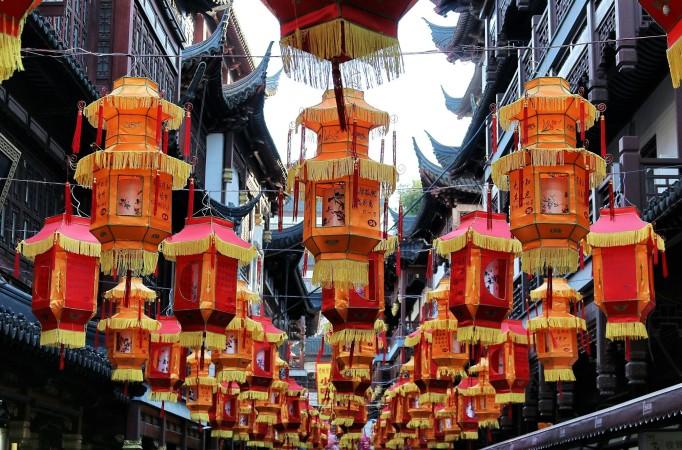
Lantern Festival - © Chastagner Thierry
What to Do in Shanghai
- Huangpu River Cruise: A Huangpu River cruise provides a unique view of Shanghai's skyline. As you glide past iconic landmarks like the Bund and the Pudong financial district, you’ll experience the city’s blend of historical charm and modern sophistication.
- Shanghai Disney Resort: Shanghai Disney Resort is a lovely place for families and Disney fans. With its enchanting rides, themed lands, and immersive experiences, it provides endless fun and entertainment for visitors of all ages.
- Zhujiajiao Water Town Visit: Escape the city’s hustle and bustle with a trip to Zhujiajiao, an ancient water town located on the outskirts of Shanghai. Stroll along its charming canals, explore traditional architecture, and enjoy local snacks in this picturesque setting.
- Acrobatic Shows: Shanghai’s acrobatic shows are a must-see for their breathtaking displays of skill and artistry. These performances combine traditional Chinese acrobatics with modern choreography, creating a visually stunning experience.
- Nightlife in Xintiandi and the French Concession: For a taste of Shanghai's lively nightlife, visit Xintiandi and the French Concession. These areas are known for their trendy bars, stylish clubs, and lively atmosphere, offering a range of options for an enjoyable evening out.
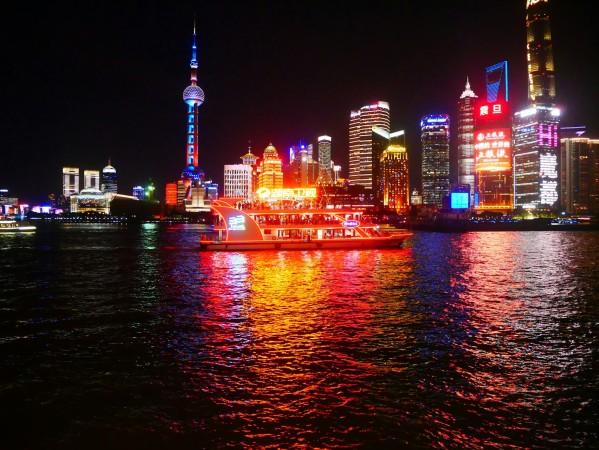
Huangpu River Cruise at night - © Emmanuel Appiah
Shopping in Shanghai
High-End Shopping Malls
Shanghai is home to some of Asia’s most luxurious shopping malls, including Plaza 66, IFC Mall, and Times Square. These upscale destinations feature international designer brands, gourmet dining, and high-end services, catering to both fashion enthusiasts and those seeking a premium shopping experience.
Traditional Markets
For a more authentic shopping experience, visit traditional markets like Yuyuan Bazaar. Here, you can find a variety of local products, from handcrafted souvenirs to traditional snacks. The bustling atmosphere and colorful stalls provide a glimpse into Shanghai’s vibrant market culture.
Famous Shopping Streets
Nanjing Road and Huaihai Road are Shanghai’s premier shopping streets, lined with flagship stores, boutiques, and department stores. Nanjing Road is renowned for its impressive array of shops and vibrant energy, while Huaihai Road offers a mix of luxury and trendy brands.
What to Buy in Shanghai
When shopping for souvenirs, consider items like silk products, traditional tea, and Shanghai-themed collectibles. These unique gifts capture the essence of Shanghai and make for memorable keepsakes from your visit.
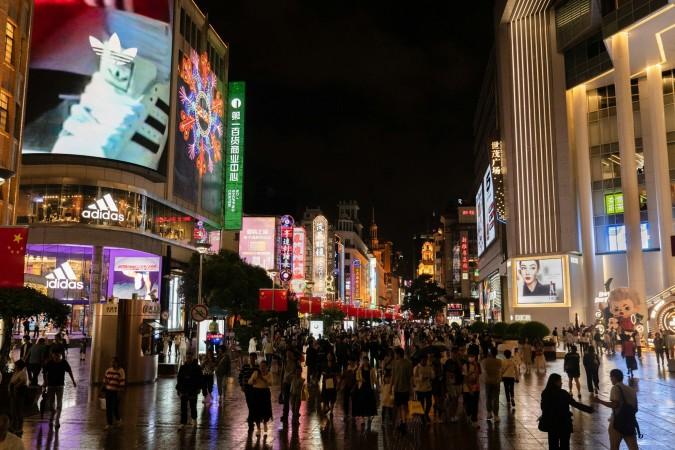
Shopping street in Shanghai - © Howei Wang
Weather in Shanghai: Best Time to Visit
Best Time to Visit
Shanghai enjoys a temperate climate with distinct seasons, making it a year-round destination. However, the best times to visit are during the spring (March to May) and autumn (September to November). During these seasons, the weather is mild, with comfortable temperatures and lower humidity, ideal for sightseeing and outdoor activities.
Spring in Shanghai
- Weather: Pleasant temperatures range from 10°C to 20°C (50°F to 68°F). The city experiences blooming flowers and a general sense of renewal.
- Tourism Trend: Spring is a popular time for tourists to explore Shanghai’s parks and gardens, such as the Yuyuan Garden and Century Park, as the weather is perfect for outdoor activities. Cherry blossom festivals and garden exhibitions also attract visitors during this season.
Summer in Shanghai
- Weather: Hot and humid, with temperatures often exceeding 30°C (86°F). Expect to encounter strong rain showers and thunderstorms on occasion.
- Tourism Trend: Despite the heat, summer remains a bustling season in Shanghai. Tourists flock to water parks, such as the Shanghai Ocean Aquarium and theme parks like Shanghai Disney Resort. The cooler evenings offer a chance to enjoy night markets and riverside promenades. Prepare for bigger crowds and higher costs for lodging and both local and tourism activities.
Autumn in Shanghai
- Weather: The cooler temperatures are between 15°C to 25°C (59°F to 77°F), with a lower level of humidity. The weather is normally clear and pleasant.
- Tourism Trend: Autumn is a favored season for exploring Shanghai’s outdoor attractions and participating in cultural festivals. The pleasant weather is ideal for walking tours, river cruises, and attending events like the Shanghai International Film Festival. The crisp air and clear skies enhance the experience of landmarks like the Bund and Pudong skyline.
Winter in Shanghai
- Weather: Mild yet cold, with temperatures ranging from 0°C to 10°C (32°F to 50°F). Snowfall is rare, but the air can be dry.
- Tourism Trend: Winter is a quieter time for tourism in Shanghai, with fewer crowds at major attractions. This season is perfect for enjoying indoor activities, such as museum visits and shopping in luxurious malls. The festive atmosphere around Christmas and Chinese New Year adds a unique charm to the city, with holiday decorations and seasonal events providing a special experience for visitors.

Cherry blossoms season in Shanghai - © Wenhao Ruan
Cultural Etiquette in Shanghai
Do’s and Don’ts
- Do: Greet people with a friendly smile and a handshake. When dining, wait for the host to begin the meal and use the correct chopsticks. Show respect at religious sites by dressing modestly and speaking quietly.
- Don’t: Avoid discussing sensitive topics like politics or historical issues. It’s also considered impolite to point with chopsticks or stick them upright in rice, as it resembles funeral rites.
Table Manners
At the dining table, it’s customary to share dishes and use communal chopsticks to serve yourself. Finish your food, but don’t clear your plate completely, as leaving a small amount is a sign of satisfaction. Slurping noodles is acceptable and even encouraged, as it signifies enjoyment of the meal.
Gift-Giving Customs
When visiting someone’s home, bringing a small gift like fruit, tea, or a souvenir is a kind gesture. Gifts should be wrapped nicely, and it’s polite to present them with both hands. Avoid giving clocks or umbrellas, as these are associated with funerals.
Dress Code
In Shanghai, dress codes vary by occasion. Smart casual is appropriate for most settings, while formal attire is expected at upscale venues and events. When visiting temples and religious locations, you should dress modestly.
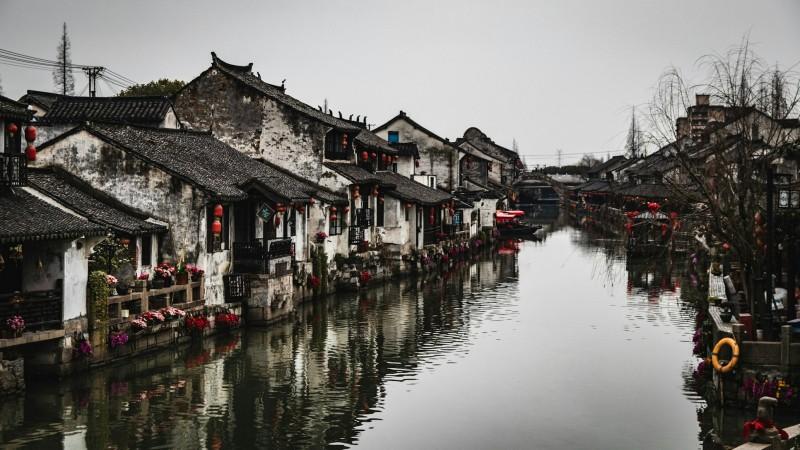
An ancient corner of Shanghai - © Matt Zhang
Essential Travel Information
Getting Around Shanghai
Getting around Shanghai is straightforward and efficient, with the metro system offering extensive coverage across the city, connecting major attractions and neighborhoods. This system is the most convenient way to travel, especially if you use a Shanghai Public Transport Card for easy access and savings. Buses are plentiful but can be crowded and challenging for non-Mandarin speakers, while taxis are widely available though they may be subject to traffic congestion during peak hours. For a more eco-friendly option, the city is bike-friendly with numerous bike-sharing services that make exploring parks and historic areas enjoyable.
ATM & Banking Services
ATMs are readily accessible throughout Shanghai, including at airports, shopping centers, and convenience stores. Currency exchange services are available at airports, major hotels, and dedicated exchange offices; it’s advisable to exchange a small amount of currency before arrival and use local ATMs for better rates. Most hotels, restaurants, and shops in Shanghai accept major credit and debit cards, but smaller establishments may only accept cash, so carrying some local currency is useful. Additionally, mobile payment systems are widely used in the city, allowing for convenient transactions via smartphone, so consider setting up an account with these services if you plan to use them frequently.
Where to Stay in Shanghai
Shanghai has a diverse choice of lodging alternatives to suit all interests and budgets. Luxury hotels provide top-notch amenities and exceptional service with stunning views, while budget options, including affordable hotels and hostels, offer comfort and convenience without straining your wallet. Boutique hotels provide personalized service and distinctive decor, resulting in a unique and trendy experience. To ensure a great stay, book your accommodation early, check reviews on popular booking platforms, and choose a location close to public transport and key attractions.
Articles for you

Explore Yala National Park - Sri Lanka Travel, Asia
Tucked away in Sri Lanka’s southeastern corner, Yala National Park is where wild nature meets deep tradition. Known worldwide for its leopard population, the park is also home to elephants, sloth bears, crocodiles, and hundreds of bird species. Beyond wildlife, Yala opens doors to a cultural landscape dotted with ancient temples, Buddhist ruins, and coastal villages. For travelers seeking more than just a safari, Yala offers a chance to explore eco-tourism, local communities, and sacred heritage sites.
Population: The Yala National Park area doesn’t have a human population.
Economy: The economy around Yala National Park thrives on a blend of eco-tourism, agriculture, and local services. Safari tours, eco-lodges, and cultural experiences drive steady income for nearby towns like Tissamaharama and Kataragama, supporting thousands of families.
Landmarks: Famous for Block I of Yala and wildlife encounters, including elephants, sloth bears, crocodiles, and exotic bird species.

Explore Galle - Sri Lanka Travel, Asia
Nestled on Sri Lanka’s southern coastline, Galle is a vibrant city where history meets the sea. Its cobbled streets, colonial architecture, and serene beaches make it a must-visit destination for travelers seeking a blend of culture, adventure, and relaxation. A UNESCO World Heritage site, Galle captivates visitors with its Dutch Fort, bustling markets, and friendly locals. Whether you’re exploring the ramparts at sunset or savoring fresh seafood by the shore, Galle promises an unforgettable journey into Sri Lanka’s heritage.
Population: Approximately 113,000 in 2023.
Economy: Galle’s economy thrives on tourism, trade, and fisheries. The city’s historic fort, colonial architecture, and coastal charm draw thousands of international visitors each year, making tourism its main economic driver. Fishing remains vital for local livelihoods, supplying fresh seafood across the region.
Landmarks: Famous for the Galle Fort, Dutch Reformed Church & Maritime Museum, and Unawatuna Beach.

Explore Bentota - Sri Lanka Travel, Asia
Nestled along Sri Lanka’s southwestern coast, Bentota is a tropical paradise that blends golden beaches, vibrant culture, and thrilling adventures. Famous for its calm waters, luxury resorts, and scenic river estuary, Bentota has become a top destination for travelers seeking both relaxation and authentic experiences. From serene beach walks at sunrise to adrenaline-pumping water sports, this coastal town offers a perfect balance of leisure and exploration. With its proximity to Colombo and Galle, Bentota is easy to reach, making it an ideal stop for both short escapes and extended holidays.
Population: Approximately 37,000 in 2023.
Economy: Bentota’s economy thrives mainly on tourism, which drives local businesses such as hotels, restaurants, and wellness retreats. The town also benefits from fishing, coconut cultivation, and handicrafts like wood carving and batik textiles. Many residents rely on the growing demand for water sports and Ayurvedic treatments, making tourism the backbone of both income and employment in the area.
Landmarks: Famous for Bentota Beach, Bentota River Safari, and Kande Vihara Temple.

Explore Mirissa - Sri Lanka Travel, Asia
Mirissa is a charming coastal town on Sri Lanka’s southern shoreline. Known for its golden beaches, turquoise waters, and vibrant marine life, it has become a must-visit stop for travelers exploring the island. Many come for whale watching, surfing, and sunset views at Coconut Tree Hill, but Mirissa offers much more than postcard beauty. The fishing boats you see anchored by the bay carry generations of stories. Local traditions, delicious cuisine, and a laid-back rhythm of life shape every visitor’s experience.
Population: Approximately 4,700 in 2023.
Economy: Mirissa’s economy is largely shaped by its coastal location. Fishing has long been the backbone of local livelihoods, with generations relying on the Indian Ocean for income. In recent decades, tourism has become the main driver of growth, thanks to whale watching, surfing, and beachside hospitality.
Landmarks: Famous for Mirissa Beach, Coconut Tree Hill, and Parrot Rock Bridge.

Explore Nuwara Eliya - Sri Lanka Travel, Asia
Tucked away in the Central Highlands of Sri Lanka, Nuwara Eliya is often called “Little England”. With its rolling tea plantations, cool misty mornings, and colonial charm, this mountain town feels like a step into another world. Travelers come here to breathe fresh air, walk through flower gardens, sip the finest Ceylon Tea, and enjoy a pace of life far from the island’s busy cities. Whether you’re drawn by scenic landscapes, heritage architecture, or the warmth of its people, Nuwara Eliya is a destination that blends nature, culture, and history in perfect harmony.
Population: Approximately 781,000 in 2023.
Economy: Nuwara Eliya’s economy thrives mainly on tea production, as it sits in the heart of Sri Lanka’s central highlands, famous worldwide for Ceylon Tea. The city also benefits from a growing tourism industry, attracting visitors with its colonial charm, cool climate, and scenic landscapes.
Landmarks: Famous for Gregory Lake, Hakgala Botanical Garden, and Victoria Park.

Explore Sukau - Malaysia Travel, Asia
Nestled on the banks of the Kinabatangan River in Sabah, Malaysian Borneo, Sukau is a destination where wildlife, culture, and conservation come together. Known as one of Asia’s top spots for river safaris and eco-tourism, this quiet village offers a front-row seat to encounters with Bornean orangutans, pygmy elephants, proboscis monkeys, and exotic birdlife.
Population: Approximately 1,400 in 2019.
Economy: Sukau’s economy is shaped by its riverine location and natural resources. Traditionally, the Orang Sungai community relied on fishing, small-scale farming, and forest gathering for their livelihood. Today, the village has shifted toward eco-tourism, with river cruises, jungle trekking, and homestays providing income.
Landmarks: Famous for the Kinabatangan River cruises, Gomantong Caves, and Ox-bow lakes and wetlands.
